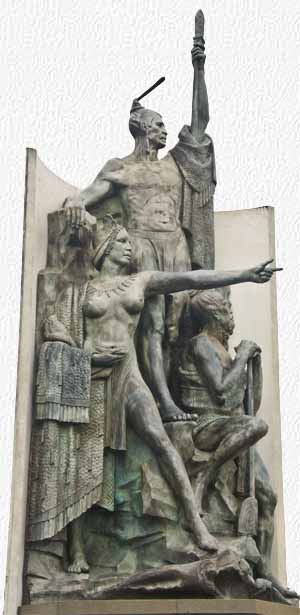A Trip to Australia and New Zealand
Wellington - History Notes
 In 1825 John George Lambton organized the first New Zealand Company with the aim of colonizing New Zealand as a British colony. Lambton sent two ships to New Zealand under the command of Captain James Herd. In 1826 Herd landed in what the local Maori inhabitants knew as Te Whanganui-a-te. Herd named it Lambton Harbor. (Today it is known as Wellington Harbor.) On Herd's return to London he discovered that Lambton had been unable to get any cooperation from the British Government and, discouraged, had given up interest in New Zealand.
In 1825 John George Lambton organized the first New Zealand Company with the aim of colonizing New Zealand as a British colony. Lambton sent two ships to New Zealand under the command of Captain James Herd. In 1826 Herd landed in what the local Maori inhabitants knew as Te Whanganui-a-te. Herd named it Lambton Harbor. (Today it is known as Wellington Harbor.) On Herd's return to London he discovered that Lambton had been unable to get any cooperation from the British Government and, discouraged, had given up interest in New Zealand.
In 1829 Edward George Wakefield published a book in London which advocated the colonization of Australasia. His book stimulated great interest in colonizing South Australia in 1834 and similar interest in colonizing New Zealand a couple of years later. In 1837 Wakefield established the New Zealand Association. Opposition to Wakefield's plans was formidable. Both the government and the church opposed the unlimited power that Wakefield intended for the leaders of his new colony, but by 1837 Wakefield was able to obtain a Royal Charter to colonize New Zealand pretty much on his own terms, but with the proviso that the venture would have to take the form of a joint stock company. Over the next few years, after a lot of back and forth and several name changes the parties agreed to dissolve the New Zealand Association and to form the New Zealand Company in its place. In the process several members of the first New Zealand Company joined in the new venture.
In 1839 Edward Wakefield's younger brother, Colonel William Wakefield, led a New Zealand Company expedition to the same area that Herd had gone thirteen years earlier. Taking advantage of the fact that New Zealand was not yet formally a colony, the New Zealand Company purchased several very large tracts of land from various Maori chieftains for a ridiculously low price. The company's plan was to resell this land at a profit to gentlemen among the settlers whom they were bringing to New Zealand. The gentlemen would own the land and hire laborers among the settlers who were too poor to purchase their own land. Eventually the laborers would earn enough money to buy their own land. In 1840 the company decided to name it's first settlement after the Duke of Wellington because of the political support that the Duke had given to colonization activities such as their own.
On January 6, 1840, the Treaty of Waitangi was signed and New Zealand was proclaimed to be a British Colony. The treaty specifically decreed that the Maori could not sell their land to anyone except the British government. Lieutenant-Governor William Hobson immediately froze all land sales and ordered that all prior sales of land were invalid until reviewed by the British government. The situation was eventually modified by permitting the New Zealand Company to purchase land from the Crown at a discount and resell it to the new settlers under Government supervision. The monies that the government received from this arrangement was used to assist migration to New Zealand. The company went on to help settle Europeans in other parts of New Zealand (including Dunedin in 1847), however, it suffered from a variety of problems including it's own misadministration which ultimately led to insolvency, numerous bitter land disputes, and serious mistreatment of indigenous people. It was forced to give up its Royal Charter in 1849.
